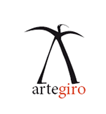Moving Mountains @ White Night Melbourne 2016
2016-02-16
Moving Mountains | Video,Josephine Telfer; Sound, John Phillips
Curator, Renata Summo-O’Connell. ( Screening at the Joneses House - Visible from Collins Street).
link event: http://whitenightmelbourne.com.au/event/moving-mountains/
i. Telfer, Phillips and Summo-O’Connell have collaborated since 2007, having presented various works in Italy, France and Australia. They participated in the 2014 edition of White Night Melbourne with the video Above the Sound of Many Voices, screened in Baptist Lane. The Melbourne screening happened concurrently with a Florence based event in Italy, as agreed with the WNM program organizers at the time. Moving Mountains is the new effort produced by this successful collaboration, presenting a 6min 30sec video by Josephine Telfer with sound composed by John Phillips and curatorial and conceptual aspects coordinated by Summo-O’Connell.
ii. Coherent with their previous works, where both Phillips and Telfer have consistently dealt with issues concerning our environment, Moving Mountains is a challenge to advocate the profound shift needed with regard to the planet. Art, as a form of cognizance, can address this major question. Telfer and Phillips’ challenge does not concern only our planet’s biosphere. The “climatic unconscious” as it has been named, is indeed what holds people together, as climate conditions do bond people ( Supercommunity Project, 2015; http://remaimodern.org/prelaunch/projects/supercommunity/). Moving Mountains is in fact a challenge that the artists throw down at us, a challenge that concerns humanity’s choice and actions.
iii. Moving Mountains’ visual component continues Telfer’s exploration of the sublime, a discourse around the creative gesture in situ as well as her fascination with the deep relationship between artist, place and environment. The sublime enters into the realm of the presentation of the unpresentable, through constant experimentation; the sublime event is both a moment of anxiety, and a moment of quickening, in Lyotard’s words. An exploration of the sublime by the artists, Telfer and Phillips, however is also an invitation to the viewer, the listener. Whilst some contemporary art research in space attempted at changing the spectator's relationship with reality, within use of technology and architecture, Telfer’s activity in space is an invitation to share with her the artist’ direct but inclusionary experience and reflection.
iv. In Moving Mountains, like in Eclipse (2010), in Diffusion 1 & 2 (2011), in Above the Sound of Many Voices (2014), the significant presence of water calls for the viewer’s response, beyond the comprehensive transportation into the sea movement. A sense of being absorbed by the sea, the sky and the moon was expressed in the video ‘Eclipse’ where Telfer’s shadow, cast on the beach, was eclipsed by the sea waves washing over the moon. In Moving Mountains, also a single-channel work, the artist’ body is completely absent if it was not for her gaze, through which we experience the presentation of the unpresentable: the sublime moment where mountains and sea play a shifting of place and distance. A strong conceptual artist, Telfer opens further the interstitial vision that characterizes her research, exposing the quickening that makes possible the sublime.
v. Phillips’ immersive sound, aiming at pervading the space (six channel surround), brings close and realistic the sublime endeavor to move mountains. The development of the sound narrative through a solo electric guitar piece built up through layering of parts, achieves a rich, strong point of contact between the visual component of the work and music. Drones and "horn" tones developed through rattling the instrument and the use of controlled feedback through the guitar amplifier attain organic and mysterious tones. A sense of promise weaving in and out of, between assurance and uncertainty. Dissecting points of contact between visual art and music, interpreting suggestions and manipulating codes and symbols: Phillips’ sound does not shy away from themes that at ease with the images make their artistic journey evident.
Lyotard, Jean-François. "Answering the Question: What is Postmodernism?" Trans. Régis Durand. The Postmodern Condition: A Report on Knowledge. Manchester: Machester University Press, 1984. 71-82. |---. "The Sublime and the Avant-Garde." The Inhuman. Cambridge: Polity Press, 1991. 89-107
.jpg)
